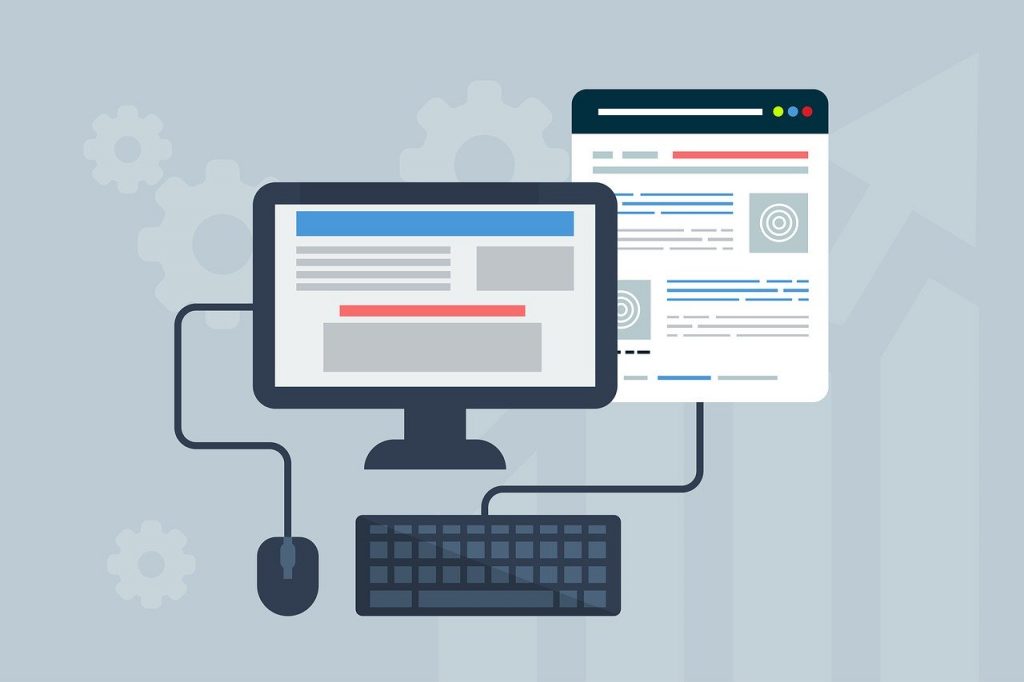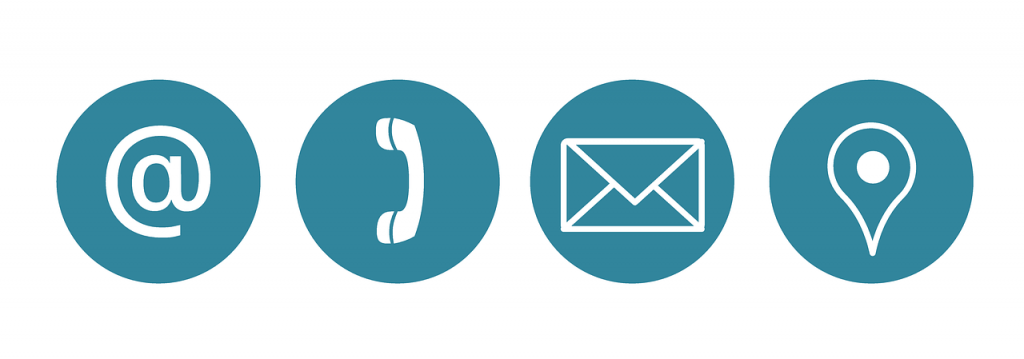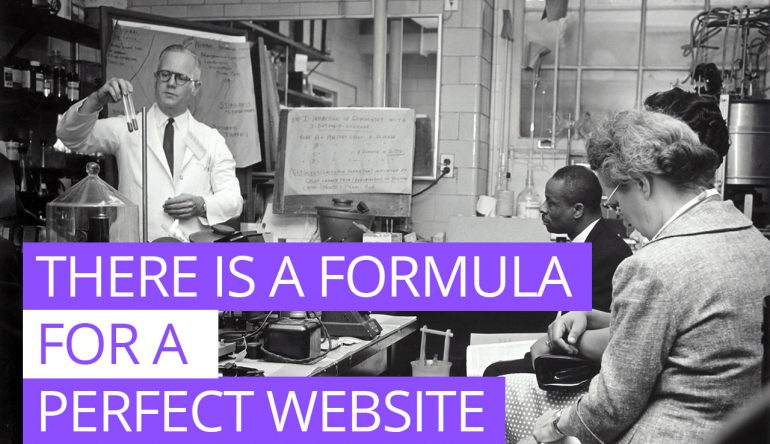A perfect website isn’t made in a couple of hours. In fact, the best websites often take months to make, because the owners strive towards the best possible results and conversion rate. They incorporate all sorts of changes, both big and small, and compare the before and after results.
Despite the perfect website being a process, there are quite a few elements that every website should contain in order to be functional.
In this post, we will look at the scientific approach to building a perfect website, or the elements that functional and successful websites consist of.

What makes a good homepage?
It’s true that web design trends change all the time, but some things are forever. Coherent and clean homepages are not only a trend but also a necessity when it comes to most websites, especially eCommerce ones.
When people want to purchase something, they want it to be as simple as possible and hassle-free. The last thing you want is to confuse them with your homepage and make them close your website before even seeing your product page.
Let’s look at the things that the homepage of every perfect website needs to have.
Crucial homepage elements
1. A good and effective headline
Here’s the first element of a perfect website.
When you click on a site, the first thing you might first notice can be its color or a picture, but what convinces you that that very website is the right choice for you is the headline.
Copywriters sometimes spend hours trying to come up with the best possible headline, that will grab people’s attention and convince them to try a service or purchase a product.
There’s a lot of science behind a good headline, which makes sense because they are the selling points of websites.

Experts highly recommend headline research, so you can see through examples what excellent ones look like. Visit as many websites as you can and write down your ideas (and I mean all of them) because you never know what might come in handy later.
Fortunately for all of us, there are some tricks behind perfect headlines that are here to make our jobs easier. Experts recommend headlines to be 5 to 12 words long. They also recommend the use of descriptive and specific adjectives (for example, use ‘stunning’ instead of ‘pretty’) and the use of keywords.
2. A clean design that is easy to navigate and look at
This doesn’t necessarily mean minimalist design, although minimalism is often the best and easiest choice.
Here are some dos and don’ts of homepage design:
Do:
- Get rid of everything that could distract the visitor (unnecessary text, buttons, etc.)
- Use 3 colors at most
- Same goes for fonts
- Utilize whitespace to turn the visitor’s attention to important elements
- Make your website high contrast, so the background and the text don’t clash
- Go for short and informative descriptions
Don’t:
- Use bright colors for your background, such as green, yellow or blue
- Hide the navigation because people might get confused
- Use more than 3 colors for your design because the coherence could be lost
- Make your website low contrast, this will result in all of your text is practically unreadable
- Use long paragraphs of text and overwhelm your visitors with information
- Use too many fonts
3. Testimonials
Here’s a perfect website element that leans more on the trust side than on the scientific side.
Testimonials, in a way, are badges that guarantee trust, credibility, and authority and are one of the most important parts of a website.
They’re social proof: they tell your visitors that ‘hey, these guys are legit, you should definitely do business with them’.
If there’s a customer that was really satisfied with your work or you’ve just finished a collaboration with another business, ask them if they would be willing to write you a testimonial that you would then feature on your homepage.
Of course, there are a few things that make the perfect testimonials:
- a credible source – written by an owner of a business you worked with, even better if they’re well known
- a story – from a customer, the more sincere and original the better
- length – don’t make it too long, most people have a short attention span
- details – they will really convince the visitors how much you helped the person writing the testimonial

4. Call-to-action buttons
Call-to-action or CTA buttons are buttons used to guide visitors to take a certain action, be it to purchase a product, try a service or trial, download something, add an item to the cart, and such.
They are extremely important because if you don’t have them, people won’t be able to perform any actions on your website. Similarly, if you misplace them, people will miss them.
If you think about it, you’ll realize that they’re always short and contain phrases such as: ‘download now’, ‘take the course’, ‘try our trial’, ‘purchase now’, ‘buy today’ and so on.
While green and orange buttons have proven to perform the best, in the end, the color of your CTA buttons depend on the colors of your website. It is recommended that you try to use buttons that aren’t conventionally shaped, such as rectangles. Instead, soften their edges a bit and make them look more unique.
5. Recent blog posts
If your website has a blog, don’t forget to include the latest blog posts on the homepage.
This is a great way of showing people that you’re not only highly professional but also active and maintaining your website and blog.
It’s also a great and subtle way of pitching your blog.
That was all the important perfect website homepage elements, so let’s move onto other things that the perfect website needs to contain.

Other important website elements
1. Contact information
No matter what kind of business you run, having contact information on your website is an absolute must.
Not because it shows that you’re professional, but because customers actually need it and use it all the time.
Whether they need help learning more about a product or want to ask if they can book your service, your phone number, and contact forms are there to help them make this possible.

So, not only do you need to include them, but you also need to make sure that they can find them easily and that they are legible. Businesses usually have contact pages where they include all of this information, but sometimes they can even be found on homepages, near the end.
On homepages, after businesses list who they are and what they do, they give their visitors a chance to book their services immediately.
2. Simple navigation
We mentioned navigation when talking about a good homepage and its clean design.
Good navigation is crucial for all kinds of websites because it allows people to find their way around your site. If it’s confusing, people will get lost and simply close your website in frustration.
Web designers recommend that you limit the number of items in the menu, utilize a certain order of pages when making your navigation, include a search bar so the visitors can find something faster, and link your logo to the homepage.
All of these will improve the user experience and help people navigate your website with ease.
3. Responsive design
Responsive design is a must when it comes to successful websites.

People aren’t using desktops as their primary devices anymore. Instead, they’re using smaller devices, mostly smartphones, to browse the internet and buy what they need.
People don’t have time for typing anymore and instead, they’re using voice search and speaking to their voice assistants, who are looking stuff up instead of them.
To make it possible for them to open and use your website, make sure your website is responsive.
4. Optimized elements
A sign of every professional website is speed, and it is achieved by different kinds of optimizations.
When adding photos to websites, web designers optimize them, so their size isn’t too big and doesn’t negatively affect speed.
They also clean up the code and make sure there’s no residual coding that could present a problem in the future and cause bugs.
There are also other elements that can be optimized, such as the content, the meta title and description, keywords and many more.
If you want to know if your website can be improved, there are dozens of sites that will scan your website and tell you what you can optimize.
Some of them include Screaming Frog, Ubersuggest, Ahrefs, Moz, Crazy Frog, GTMetrix and Google Search Console. They will tell you more about keywords, website elements that can be optimized, the traffic you’re getting and so on.
5. Detailed and informative descriptions
Good descriptions aren’t a necessity when it comes to only eCommerce websites.
Every business needs to provide its visitors with short and informative descriptions of who they are, what they do, as well as what their services entail.
When it comes to product descriptions, include the product benefits, the quality of the products, how they were made, a list of ingredients and so on. Some businesses choose short stories for their product descriptions, while some go for jokey ones.
Of course, these depend on the nature of your business, products and the personality of your ideal customer.
6. Professional photography
With good descriptions go professionally taken photos.

Whenever I have read anything on the qualities of a perfect website, the experts writing these articles always stress the importance of good photos.
Hire a photographer and let them capture your products and present them in the best possible light. In the long run, it would even pay off to pick up photography as a hobby and learn basic lighting, so whenever you get a new product, you won’t have to call anyone to take photos of it for you.
A good camera in a workplace can make a huge difference: take pictures of the offices and capture your workers as they’re having a meeting or are mid casual discussion. You can use these photos for your Google My Business listing, social media accounts or brochures.
7. Privacy policy page
Here’s another sign of a perfect website.
Theft of information and companies collecting information and selling it to other companies are now big concerns and for a good reason. People want to feel safe on the internet, especially on websites where they’re buying something.
Include a privacy policy on your website, and inform your visitor how their information will be used. This will make them trust you more, as you’re not doing something behind their back and being clear about your intent.
Include everything they will need to know about cookies, ads, and emails, should they provide you with theirs.

8. Social media links
What business nowadays doesn’t have at least one social media account?
Social media experts even say that they’re crucial, both because they provide businesses with free and paid advertising. They also allow businesses to interact with customers, provide help and respond to their questions.
People love following brand accounts because they are a great place to learn about new products, restocks, and giveaways.
On your contact page, include the links to your social media, so when a visitor goes to look at your working hours, they will see the links and who knows, they might click them and even follow you.
If they see that you post a lot and respond to people, they’ll realize that you’re active, which once again shows professionalism.

Wrapping up
There you have it: 5 crucial elements of website homepages and 8 important elements of the rest of the website.
No two websites are the same, and every single one has something that differentiates it from the rest, but some elements are a must when it comes to building a successful website.
Well-thought-out headlines that will convince people to try your products, clean designs, testimonials that show that your business is credible, detailed descriptions, contact information, and responsive design are only some of the crucial elements that your website will have to contain in order to provide visitors with flawless user experience.
Thank you for reading!





